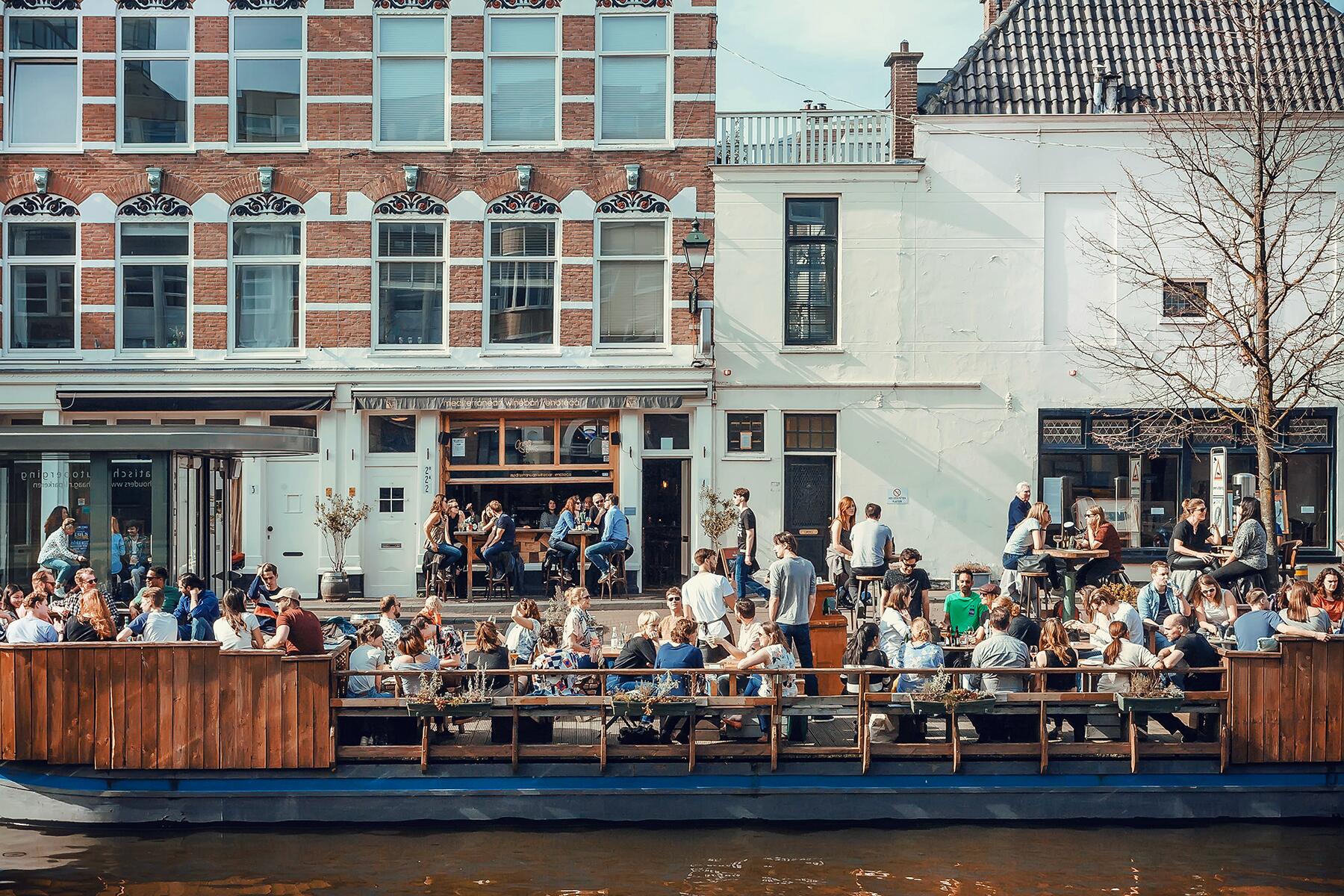- ⁄
- Travel News
- ⁄
- News
Have you heard of “death rays”?
When building something, design errors are common. But when multi-million dollar projects fail to impress, it’s hard to look the other way—they get etched into the public’s memory for all the wrong reasons. So many buildings have fallen short of expectations–their defects are glaringly obvious. We’re looking at some of the world’s most embarrassing design flaws that will go down in history as major architectural failures.
Top Picks for You
The Vessel
WHERE: New York City
Designed as a honeycomb, the spiral structure with 154 staircases is the centerpiece of Manhattan’s Hudson Yards. Right now, the attraction is temporarily closed.
The Vessel is 150-foot tall and has a four-foot-high barrier. Four people have died by suicide since it opened in 2019, and this is the second time it has shut its doors. The barrier wasn’t raised when it first closed in January due to a fatal incident, but security was enhanced and people could only visit when accompanied by another person. Even after security measures and protocols, a 14-year-old recently died by suicide here in July 2021 while he was visiting with his family.
The design is a definite problem and there’s been talk that it may never reopen.
Walkie Talkie
WHERE: London, England
The Walkie Talkie building in Central London has a terrible reputation. The building was completed in 2015 and cost £200 million, but the Walkie Scorchie—as it is infamously called—had too many things people weren’t happy with. Even before it opened, the glare from the 525-foot skyscraper heated up sidewalks and melted cars. A Daily Mail journalist also fried an egg from the scorching “death rays.”
The building installed a permanent sunshade to control the heating problem, but it didn’t end there. Gusts of wind at the base of this 37-story building were reportedly blowing people away in 2015. The concave design with glass makes the glare from the sun worse on the street below and the downdraft is another design flaw that results in an increase in wind speed on its street.
The cherry on the cake was the sky garden, which The Guardian said felt like an airport terminal.
Recommended Fodor’s Video
John Hancock Center
WHERE: Boston, Massachusetts
Now known as 200 Clarendon Street, the John Hancock Center was opened in 1976. Henry Cobb designed the all-glass, 62-story building, and it’s still the tallest building in Boston. But back then, it got noticed for the wrong reasons. While it was being built, the glass panels started falling down and shattering. They weighed 500 pounds each. Each one of the windows had to be replaced. But the problems didn’t end there. People on the upper floors reported that the building was swaying too much because of the winds. There were no structural issues with the building and it was stabilized and it still stands tall with a colorful history.
Shangri-La Hotel, At The Shard
WHERE: London, England
Shangri-La Hotel, At The Shard opened in 2014 after a delay, but soon the guests noticed a problem. Located in one of the tallest buildings in Europe, the hotel promises glorious city views, but there were more sights to be seen than the London skyline. A design flaw turned the glass panels into mirrors on the upper floors and guests could see into neighboring rooms.
The 310-meter (1,017-foot) building also has offices, restaurants, and apartments, and attracts people to see London from a bird’s eye view. The hotel fixed the privacy problem, but it wasn’t a solution that went down well because the glass design was changed. Imagine the disappointment of guests who paid hundreds of pounds to get uninterrupted views from these luxury rooms and later discovered that a privacy screen had blocked it off from one side.
August 5, 2009 - Excavators are seen dismantling the toppled apartment building at the #construction site of the Lotus Riverside apartment complex in Minhang District, Shanghai, China. #equipmentandcontracting #pilebuck #excavator pic.twitter.com/bMLy1fejnd
— Equipment & Contracting Media (@EandCmag) August 21, 2019
Lotus Riverside
WHERE: Shanghai, China
It’s a shocking sight to see the pictures of the collapsed 13-story building in Shanghai—it was intact and fell flat on the ground, killing one worker. The incident happened in 2009 and called into question the construction quality. The building was part of an 11-block complex and had 629 units, and the 500 homebuyers demanded a full refund from the developers. Shanghai Daily reported that the cause was the excavations for the garage. The soil was dug out and dumped in a landfill next to a creek, which resulted in the collapse of the riverbed. The water seeped into the soil and weakened the foundation, toppling the building with just enough space to not cause damage to other structures in the complex.
Walt Disney Concert Hall
WHERE: Los Angeles, California
Legendary architect Frank Gehry has many buildings to his credit, including the Walt Disney Concert Hall in L.A. It opened to the public in 2003, and the design was loved by all. Until a design error surfaced. The metal facade of the building reflected sun rays and heat onto the condos nearby and passersby were blinded by the glare on the street. The hotspots had to be controlled, so the glossiness was dulled down and the shining new building lost its shimmer.
Vdara Hotel & Spa
WHERE: Las Vegas, Nevada
This is another case of “death rays.” The Vdara Hotel & Spa in Las Vegas is a glass skyscraper that reflects the harsh sun on a particular area around the pool. In 2010, guests reported that it was too hot on the pool deck and the temperature could melt plastic cups and singe hair. The hotel has installed umbrellas on the deck to deal with the problem (they had initially tried to solve the problem using film on glass but it hadn’t worked), but guests have corroborated the rumors of the “death rays.”
Aon Center
WHERE: Chicago, Illinois
The Standard Oil company built the Aon Center in 1973 and it was the tallest building in Chicago until 1974. The facade was made of Italian Carrara marble, much thinner than materials normally used in buildings. Not meant for the exterior or to face Chicago’s extreme weather, the marble started cracking and falling. From 1990 to 1992, all of the 43,000 marble panels were replaced with granite panels and the refurbishment cost $80 million.
Leaning Tower of Pisa
WHERE: Pisa, Italy
The last on the list is the historic architectural blunder of Italy that prompts hilarious photos by visitors. The tower is part of a complex that includes a cathedral, baptistry, and cemetery. The construction started in 1173 and by the time they got to building the third story, the soft ground had already caused it to tilt southwards.
It took almost 200 years to finish the tower—the delays were caused by war and debts and also to understand how to fix it. Engineers tried to add more weight to the north to compensate for the tilt, but the added weight caused the tower to sink further into the soft soil. In 1990, it was closed to the public for 11 years for restoration work because it was at risk of collapsing. It’s surprising that the tower has lasted this long—it is leaning at the angle of 3.99 degrees currently, but it was at 5.5 degrees in 1990 when it could have caved in.





Excuse me but it's not the architect's fault people commit suicide on The Vessel. Would you blame the architect of the Golden Gate Bridge for its suicide numbers?
The top priority must be the safety of the people followed by the environment it provides for anyone to end their life on that building.